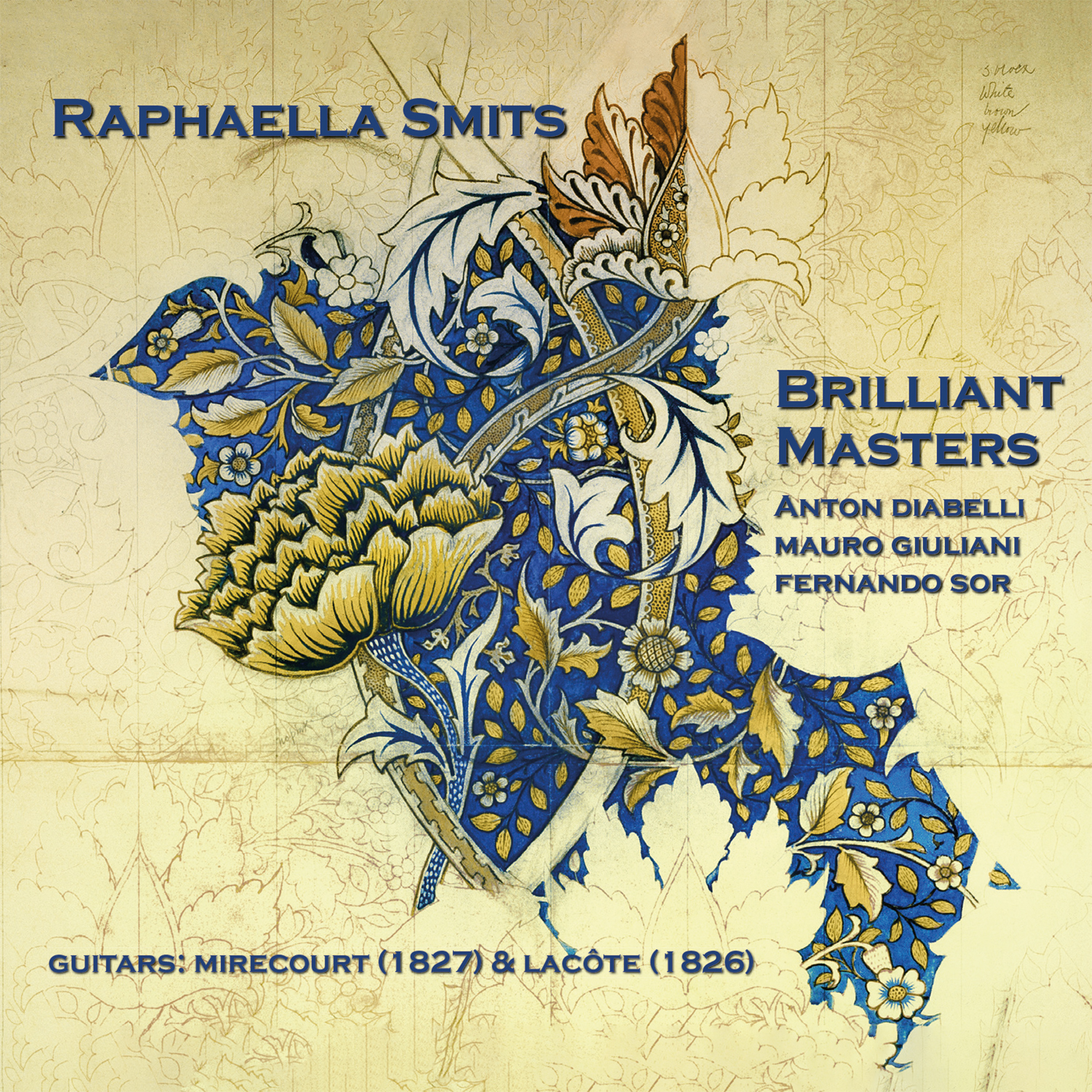About the Lacôte 1826, by Bernhard Kresse, Cologne, August 2024:
From the very beginning, René François Lacôte worked at a very high level using best quality materials and well-seasoned timbers. This guitar from his early period is labelled ‘Paris, Place des Victoires’, where Lacôte worked in the neighbourhood of other luthiers from 1823-1829. The body of the instrument is made from Cuban Mahogany and spruce and the head is equipped with the typical Lacôte wingnut tuners. When I came across this guitar in 2023, it showed many previous repairs and had serious problems regarding its playability. Because of its resonant and lively sound, which is typical for Lacôte guitars of the early period, we expected a good tonal result and so decided to go for a basic revision to bring the instrument in playable condition. This has been successful.
About playing on the Mirecourt 1827, by Raphaella Smits:
My “Mirecourt” has no label. It’s not a typical Viennese instrument, but a French-made guitar from about 1827. Mirecourt, located in the Vosges region of France, has a rich history as a center for luthierie (the craft of string instrument making), particularly during the 19th century. This instrument is a typical guitar of the late 1820s, with its classical shape and design, which we know from the guitar makers of Mirecourt or Paris. The table is of spruce, back and sides of flamed maple ebony, fingerboard and pin-bridge ebony, veneered neck scale-length 63.5, 16 frets. Just as it was common practice in those days, luthier Bernhard Kresse added two low basses: it gives the instrument and the music a resonance and depth that perfectly serves the composer’s intentions.
About the instruments
About a concert of Zani de Ferranti, by François-Joseph Fétis, in La Revue musicale, Paris, 1834:
[...] what I am hearing is no longer the guitar that you knew, there are accents which one could not believe to be rendered by plucked strings, there is a chanterelle which, for once, is well-named, for it sings like a voice moved with tender expression; at times, there is a chord belted out with such plenitude of sound, that seems to hail from a good harp, rather than from a frail guitar; there are these new features, bold, violent and passionate, that nothing to this day led one to imagine they could possibly be produced on a guitar\'s neck.
About playing on period instruments, by Raphaella Smits, Kontich, August 2024:
When I play on period instruments, I feel blessed that I am allowed and able to do so, because it helps to better understand the composer\'s intention. But it is challenging because it does not always simplify implementation. The Lacote guitar, for example, is absolutely tiny and a struggle for the left hand to handle, but then again, this makes you find solutions worth exploring. I am convinced that through this research we are opening up a new world. A world of sounds that gets closer to the composer\'s inner ear and lets us discover the meaning of the communication language between composer/performer and listener. It is a responsibility we have to the past and to the future. Using the so-called Mirecourt eight-string guitar for the Viennese period, represented by Diabelli and Giuliani, was an easy choice: it is fast, colorful, and dynamic. Indeed, as it is described above in Fétis\' article. A very special quote because it reflects exactly my thoughts and goals.

